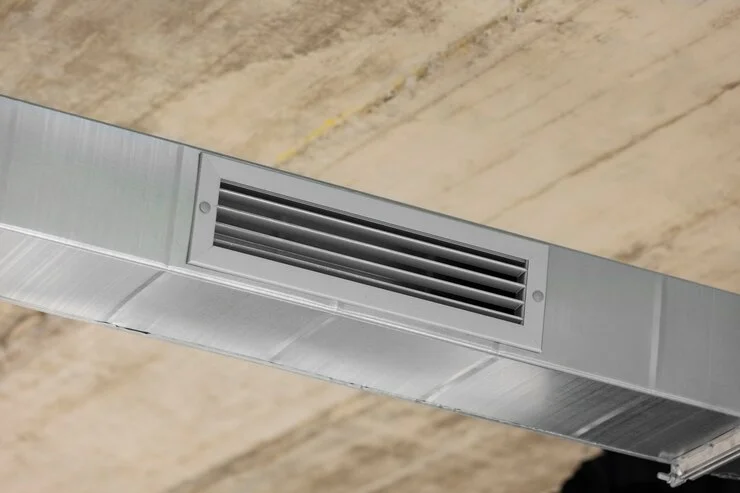When it comes to keeping your home cool during the sweltering summer months, few options are as effective or efficient as ducted air conditioning. If you’ve decided to install this system in your home, you’re investing in comfort, energy efficiency, and long-term value. However, before you jump into the installation process, it’s important to know what to expect.
Whether you’re upgrading an existing system or installing ducted air conditioning for the first time, understanding the installation process can help you prepare, minimize disruptions, and make the process go as smoothly as possible. In this guide, we’ll walk you through each step of a typical ducted air conditioning installation and highlight key things to consider before, during, and after the installation.
What Is Ducted Air Conditioning?
Before diving into the installation process, it’s worth quickly reviewing what ducted air conditioning actually is. A ducted system involves an air conditioning unit that’s connected to a network of ducts throughout your home. This allows cool or warm air to be distributed evenly through multiple rooms, providing whole-house temperature control.
Most ducted systems consist of a central air handling unit (usually located outside), ducts that distribute air, and vents in each room or zone. The system can often be controlled by a thermostat, allowing you to regulate the temperature of each room or zone independently.
Pre-Installation: Preparing for the Big Day
Before the installation process begins, there are a few essential tasks that both you and the installation team need to complete to ensure everything goes smoothly.
Site Assessment
The first step in the installation process is a site assessment. A professional technician will visit your home to evaluate its size, layout, insulation, and overall suitability for a ducted air conditioning system. This is a crucial part of the process, as it will determine the type and size of the system you need.
- System Sizing: Properly sizing the system is essential for efficiency and performance. If the system is too small, it won’t cool your home effectively. If it’s too large, it could lead to unnecessary energy consumption. The technician will use your home’s square footage, ceiling height, insulation, and other factors to determine the correct system size.
- Duct Placement: The technician will also discuss where the ducts and vents will be placed. This is important for ensuring optimal airflow and minimizing the visibility of ducts in your home.
Choosing the Right System
The technician will help you choose the right type of ducted system based on your needs and budget. There are several options available, such as:
- Reverse cycle ducted systems (which can heat and cool your home)
- Evaporative cooling systems (ideal for dry climates)
- High-efficiency units for reduced energy consumption
You’ll also discuss the zoning system, if applicable. Zoning allows you to control the temperature in different parts of your home, which can save energy and increase comfort.
Getting Quotes and Approvals
Once the site assessment is complete, you’ll receive a quote for the installation. This quote should outline the costs for the unit, labor, and any additional materials or services (like ducting or electrical work). Be sure to get at least a couple of quotes to compare pricing and services. It’s important to ensure the quote is comprehensive and includes all costs so there are no surprises later.
Once you’ve agreed to the terms and the quote, the next step is obtaining any necessary approvals, such as council permits (if required by local regulations), before installation can proceed.
Installation Day: What Happens During the Installation
On installation day, the team will typically arrive early in the morning. The process can take anywhere from one to two days, depending on the complexity of the installation and the size of your home. Here’s a step-by-step breakdown of what you can expect:
Arrival of the Installation Team
A professional team of HVAC technicians will arrive at your home with all the necessary equipment and tools. They’ll typically include:
- The air conditioning unit
- Ducting material
- Vents and grilles
- Electrical wiring
- Insulation materials
Once the team arrives, they’ll begin by prepping the area. This includes removing any obstacles, setting up protection (like drop sheets or coverings), and explaining the process to you.
Installing the Indoor Unit
The first major task is installing the indoor unit (also known as the air handling unit). This is usually positioned in the ceiling space or a dedicated mechanical room. The air handling unit is responsible for circulating the air throughout the ducts and distributing it into various rooms.
- The team will secure the unit in place and connect it to power, ensuring it’s safe and complies with local building codes.
- The technician will also check the unit’s position for accessibility, ensuring future maintenance or repairs can be easily carried out.
Ducting and Vent Installation
Once the indoor unit is in place, the technicians will begin laying out the ductwork. The ducts are typically hidden in the ceiling or floor, and the technicians will need to carefully cut access points and install the ducts in various rooms of your home.
- Ductwork Installation: The ducts must be installed with minimal air leakage, as this can reduce efficiency. The technicians will seal and insulate the ducts to ensure optimal airflow and energy efficiency.
- Vents and Grilles: Next, the vents or grilles are placed in the rooms where you want air to be distributed. These vents are typically installed in the ceiling, although they can be placed in the floor or walls in some cases. Depending on the system, you may have control over which zones or rooms are cooled, giving you greater control over temperature and energy consumption.
Connecting the Outdoor Unit
While the technicians are working inside, another part of the team will be setting up the outdoor unit. This unit is responsible for expelling heat (in cooling mode) or drawing in heat (in heating mode). The outdoor unit is usually placed outside on the ground, a roof, or a balcony.
The outdoor unit needs to be connected to the indoor unit via refrigerant piping, electrical wiring, and sometimes a drainage system. The team will ensure that the outdoor unit is securely installed and that all connections are made safely.
Electrical and System Configuration
The system will need to be wired into your home’s electrical system, which may require an electrician to ensure that it is compliant with local electrical codes. This might involve:
- Connecting the system to your electrical panel
- Installing a dedicated circuit breaker for the air conditioning unit
- Testing the system for proper power flow
Once everything is connected, the technicians will configure the system and ensure it’s operating correctly.
Post-Installation: Testing and Final Checks
After the installation is complete, the technicians will test the system to ensure everything is working as expected. This involves:
System Testing
The team will run the air conditioning system to check for functionality. They’ll check for:
- Proper airflow through the ducts
- Correct temperature regulation
- Any unusual sounds or vibrations
- The system’s ability to heat or cool rooms as required
- Zoning settings (if applicable)
Inspections and Final Touches
The technicians will inspect the entire installation to ensure that everything is securely mounted and that there are no issues with ducting, wiring, or the unit itself. They’ll also clean up the area, removing any debris or packaging materials.
Handover and Instructions
The final step is the handover process. The technician will explain how the system works, provide you with any user manuals or warranty information, and answer any questions you might have. They may also offer tips for maintaining the system, such as:
- Cleaning or changing filters regularly
- Scheduling routine service checks
- Operating tips to optimize energy efficiency
They’ll also provide you with contact information should you have any issues or need future maintenance.
Ongoing Maintenance and Care
To ensure your ducted air conditioning system continues to run smoothly and efficiently, it’s essential to perform regular maintenance. This might include:
- Annual servicing to check refrigerant levels, clean filters, and ensure optimal airflow
- Cleaning the ducts every few years to prevent dust and allergens from accumulating
- Replacing filters regularly to maintain air quality and efficiency
Conclusion
Installing a ducted air conditioning system in your home is a big decision that will pay off in comfort and energy efficiency. By understanding what to expect during the installation process, you’ll be better prepared for the project and have realistic expectations of timelines, costs, and potential disruptions.
The installation team will take care of most of the heavy lifting, but knowing what steps are involved and how the system operates will ensure you’re ready to enjoy your new, climate-controlled home with minimal stress.

Shannon Reyes is a seasoned writer with a knack for crafting engaging blogs on a variety of service industries, including plumbing, cleansing, moving, pest control, and roofing. With a keen eye for detail and a passion for helping readers navigate complex topics, Shannon brings her expertise to life through informative and accessible content.











